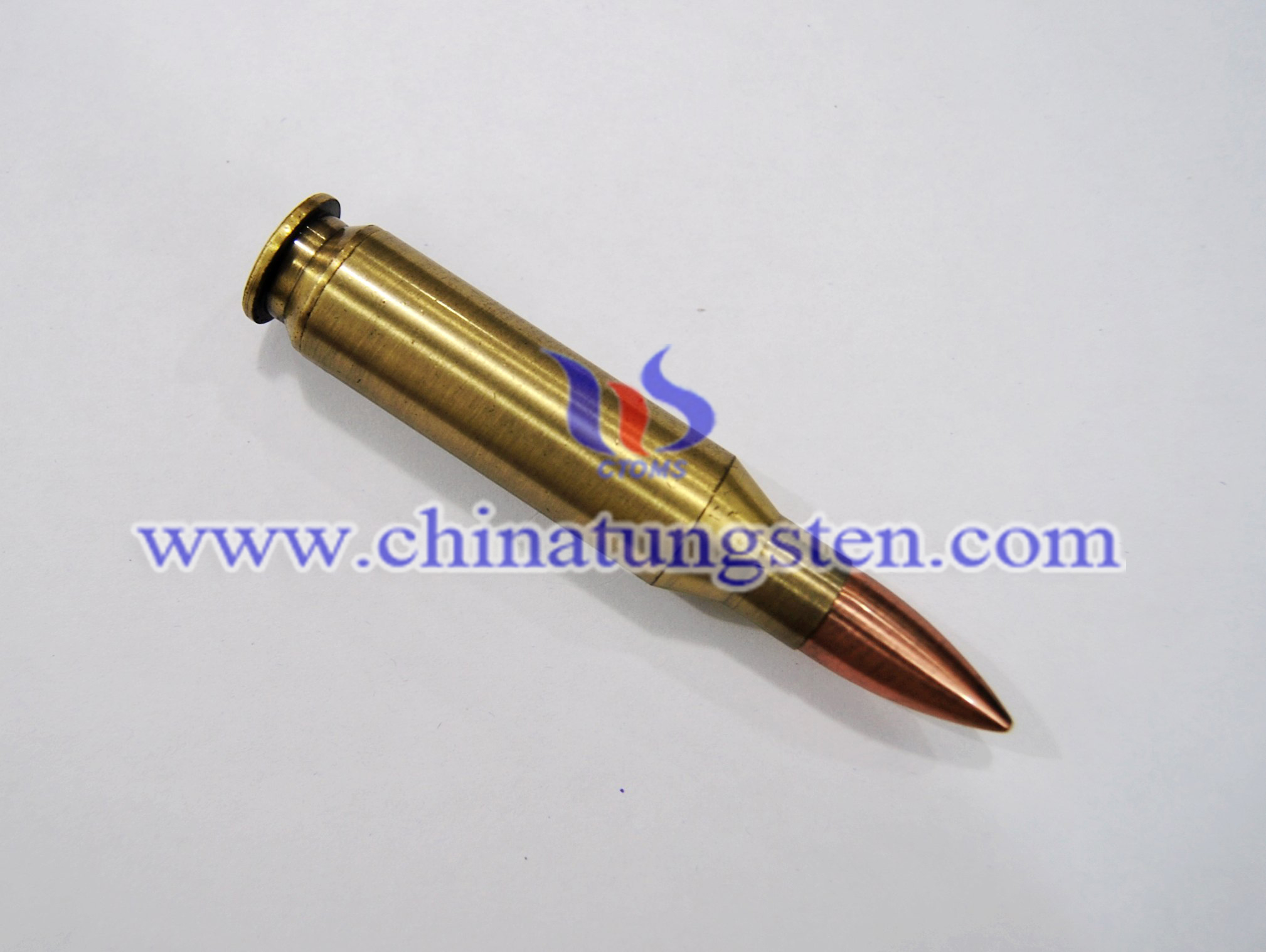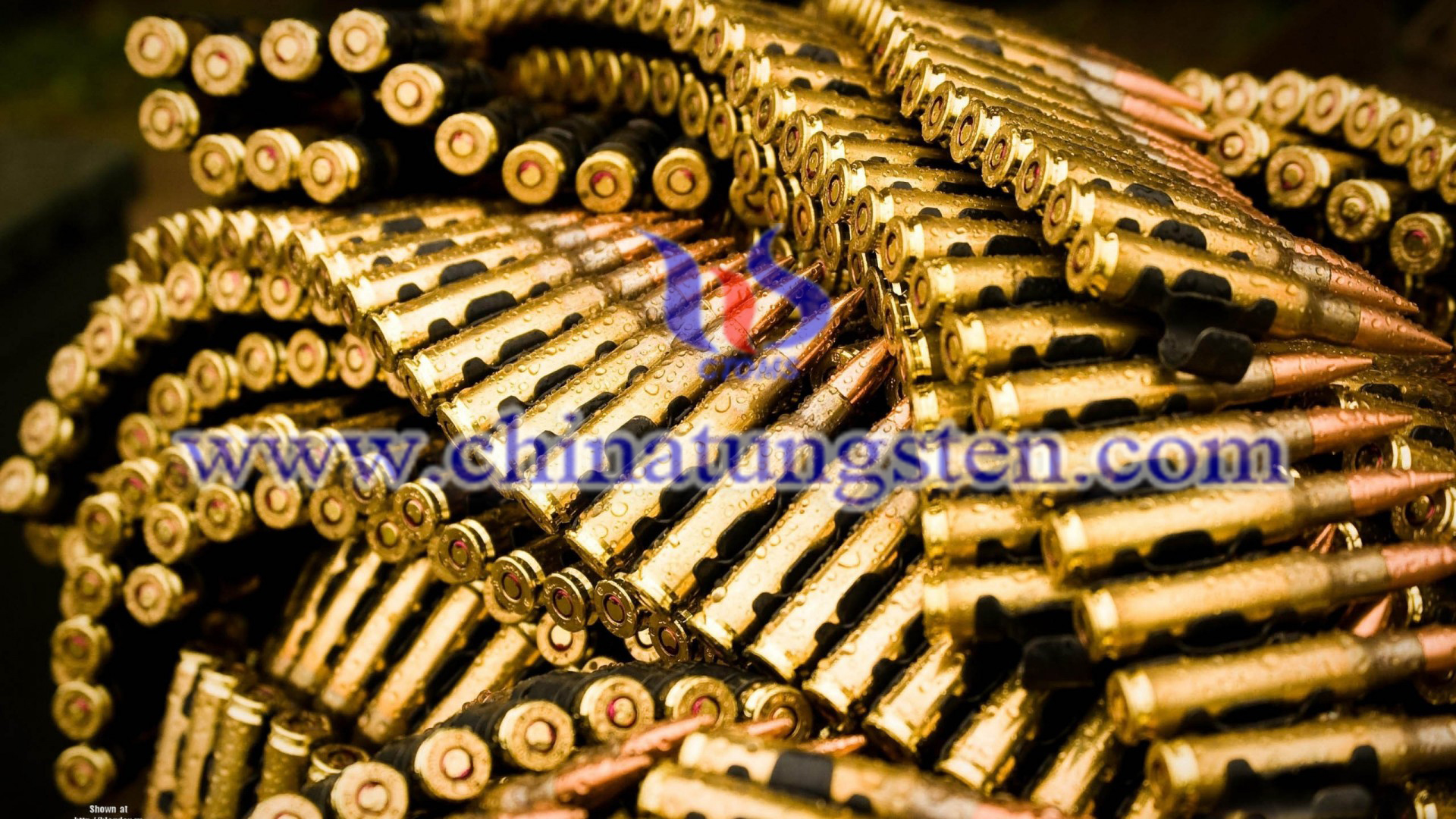Tungsten Armor Piercing Shells in World War I
- Details
- Category: Tungsten Information
- Published on Wednesday, 07 August 2013 15:22
- Hits: 2394

Tungsten armor piercing shells for tank guns, although used by most forces of this period, were not used by the British. The only British APHE projectile was the AP, Mk1 for the 2 pdr anti-tank gun and this was dropped as the product was found that the fuse tended to separate from the body during penetration. Even when the fuse didn't separate and the system functioned correctly, damage to the interior was little different from the solid shot, and so did not warrant the additional time and cost of producing a shell version. APHE projectiles of this period used a bursting charge of about 1-3% of the weight of the complete projectile, the filling detonated by a rear mounted delay fuse. The explosive used in APHE projectiles needs to be highly insensitive to shock to prevent premature detonation. The US forces normally used the Explosive D, otherwise known as ammonium pirate, for this purpose. Other combatant forces of the period used various explosives, suitability desensitized (usually by the use of waxes mixed with the explosive).
Tungsten armor piercing shells were used prior to and during World War I were generally cast from special chromium (stainless) steel that was melted in pots. They were forged into shape afterward and then thoroughly annealed, the core bored at the rear and the exterior turned up in a lathe. The projectiles were finished in a similar manner to others described above. The final, or tempering treatment, which gave the required hardness/toughness profile (differential hardening) to the projectile body, was a closely guarded secret.

Tungsten Manufacturer & Supplier: Chinatungsten Online - http://www.chinatungsten.com
Tel.: 86 592 5129696; Fax: 86 592 5129797
Email: sales@chinatungsten.com
Tungsten Picture Center: http://picture.chinatungsten.com
Tungsten Video Center: http://v.chinatungsten.com
Tungsten News & Tungsten Prices, 3G Version: http://3g.chinatungsten.com
Types of Tungsten Alloy Swaging Rod for Armor Piercing Projectile Introduction
- Details
- Category: Tungsten Information
- Published on Tuesday, 06 August 2013 14:52
- Hits: 2261

Tungsten alloy swaging rod for armor piercing projectile which is made of tungsten alloy comprising a high density penetrator core with a tapered front end and a multi-part outer case in partial contact with the core. This kind of armor piercing projectile will not penetrate because the multi-part jointed case is not as strong as a single-piece, monolithic case. Also, since the hard core is loose and not bonded to the case, then the core can not provide additional structural support. In addition, tungsten alloy swaging rod for armor piercing projectile does not have the ability to either explosively damage the target after penetration, or take data from an instrumentation package during or after penetration.
"Hollow-point" design results in radial expansion of the jacket into "petals" as the tungsten alloy swaging rod travels through the target. Such "flowering" of the case upon impact severely limits the depth of penetration into hardened targets.
Tungsten alloy swaging rod for armor piercing projectile comprising a heavy metal core and a segmented sabot with both right-handed and left-handed threads that separates from the core after exiting the gun's nozzle. It will not penetrate deeply because the nose end is made of a brittle heavy metal alloy, rather than high-strength steel. Also, it requires the use of a discarding sabot carrier.
Tungsten alloy swaging rod for armor piercing projectile with a speculating core comprising an elongated arrow style it is of a core surrounded by a body, where the hardness of the core is greater than twice the hardness of the body. The outer case is made out of tungsten alloy swaging rod. The brittle behavior of these alloys will prevent this from achieving deep penetration in hardened targets, when compared to cases made of high-strength and high-toughness steel alloys.

Tungsten Manufacturer & Supplier: Chinatungsten Online - http://www.chinatungsten.com
Tel.: 86 592 5129696; Fax: 86 592 5129797
Email: sales@chinatungsten.com
Tungsten Picture Center: http://picture.chinatungsten.com
Tungsten Video Center: http://v.chinatungsten.com
Tungsten News & Tungsten Prices, 3G Version: http://3g.chinatungsten.com
The Theory of Tungsten Alloy Armor Piercing Bullets
- Details
- Category: Tungsten Information
- Published on Tuesday, 06 August 2013 14:36
- Hits: 2187

Tungsten alloy armor piercing bullets are famous for their ability to penetrate target. It is mostly because large kinetic energy and their high tensile strength focused on the target. The bullets are made from the high-density tungsten alloy that is much harder than most armor. All have very hard warheads.
Tungsten alloy armor piercing bullets can be used against tanks, armored vehicles and concrete fortifications. When fired, bullets are under the high-temperature, high-pressure gas. Reach the target; it will make a pit in the surface of the armor, red out the armor and the pit bottom at the same time. At this time, although the head has been broken, missile force the powerful impact of inertia, it will continue onrush. When the impact force reaches a certain value, the fuse is triggered; it caused the explosion of the projectile charge. At this time, exploding charge will create tons of pressure per square centimeter in area, killing the crew inside the tank or destroying armored weapons.

Tungsten Manufacturer & Supplier: Chinatungsten Online - http://www.chinatungsten.com
Tel.: 86 592 5129696; Fax: 86 592 5129797
Email: sales@chinatungsten.com
Tungsten Picture Center: http://picture.chinatungsten.com
Tungsten Video Center: http://v.chinatungsten.com
Tungsten News & Tungsten Prices, 3G Version: http://3g.chinatungsten.com
How Does Tungsten Alloy Armor Piercing Bullets Work?
- Details
- Category: Tungsten Information
- Published on Tuesday, 06 August 2013 14:44
- Hits: 2304

The most widely used tungsten alloy armor piercing bullets in the world are made of a hardened steel, tungsten alloy, tungsten-carbide, or depleted uranium penetrator enclosed within a softer material, such as copper or aluminum. Tungsten alloy rounds, for instance, take advantage of their high-density material, designed to retain its shape and carry the maximum possible amount of energy as deep as possible into the target.
The tungsten alloy armor piercing bullets fired from rifles are strengthened with a copper or cuprous-nickel jacket, much like the jacket that surrounds lead in a conventional projectile, a jacket which is destroyed upon impact to allow the penetrating charge to continue its movement through the targeted substance.
One of the most famous types of tungsten alloy armor piercing bullets used in the past was the Teflon-coated bullets. Contrary to popular belief, the Teflon coating did not in itself help the bullet penetrate deeper, instead it was meant to help reduce the wear on the barrel after firing hardened projectiles. The strange fact is that this misconception even produced laws that lead to the restricted use of these bullets, eventually leading to their extinction.
The famous example of such a blunder was the assassination attempt on US President Ronald Reagan that took place on March 30, 1981. Then, the shooter used a bullet with a normal revolver, which actually deprived the bullet of its ability, contributing to the bullet missing the heart by less than one inch and piercing his left lung instead, which likely spared his life.

Tungsten Manufacturer & Supplier: Chinatungsten Online - http://www.chinatungsten.com
Tel.: 86 592 5129696; Fax: 86 592 5129797
Email: sales@chinatungsten.com
Tungsten Picture Center: http://picture.chinatungsten.com
Tungsten Video Center: http://v.chinatungsten.com
Tungsten News & Tungsten Prices, 3G Version: http://3g.chinatungsten.com
Tungsten Carbide Coated Tools In Mining Applications
- Details
- Category: Tungsten Information
- Published on Tuesday, 06 August 2013 14:33
- Written by Yuri
- Hits: 2167
The mining industry has one of the highest demands for tungsten carbide coated tools that have high wear-resistant, as working in a mine involves cutting through hard rock, often spanning several miles. Having tools that are resistant to wear means the company doesn’t have to replace their tools often, preventing money lost due to down times. Thus, there is a need for tungsten carbide coated tools that do not wear out easily, ensuring continued productivity for longer periods of time.
Before the use of these tungsten carbide coated tools, mining was primarily done using pick axes and shovels, to be replaced later on by tools made of steel. Where shovels relied on pure manpower to get the job done, steel tools did a better job, albeit, they were susceptible to wear.
Then came tungsten carbide tools. Since tools made of tungsten carbide are tougher and more wear-resistant, these tools are able to perform their job faster and for a longer time when compared to steel tools.
Mining companies are always on the lookout for more abrasion resistant tools beyond the usual tungsten carbide coated tools. Cemented carbide was developed by combining tungsten carbide, titanium carbide, tantalum carbide, and cobalt. This combination is even harder than regular carbine, while further improving ordinary tungsten carbine’s heat resistance ability.
Tungsten Carbide Manufacturer & Supplier: Chinatungsten Online - http://www.tungsten-carbide.com.cn
Tel.: 86 592 5129696; Fax: 86 592 5129797
Email: sales@chinatungsten.com
Tungsten Picture Center: http://picture.chinatungsten.com
Tungsten Video Center: http://v.chinatungsten.com
Tungsten News & Tungsten Prices, 3G Version: http://3g.chinatungsten.com





 sales@chinatungsten.com
sales@chinatungsten.com